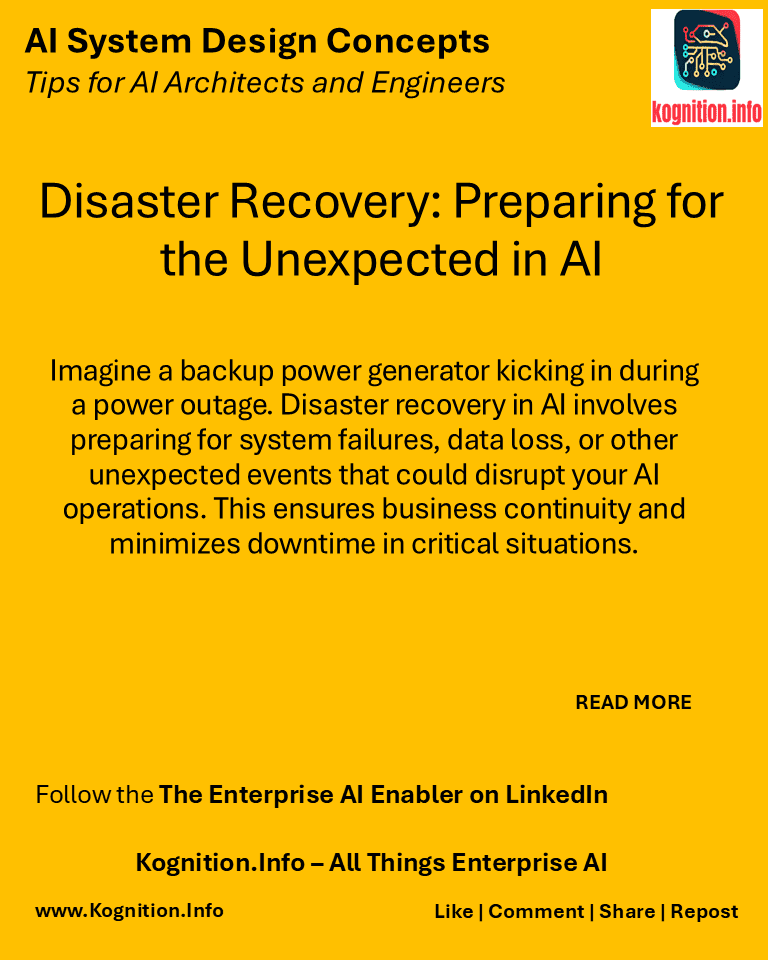
Imagine a backup power generator kicking in during a power outage. Disaster recovery in AI involves preparing for system failures, data loss, or other unexpected events that could disrupt your AI operations. This ensures business continuity and minimizes downtime in critical situations.
Use cases:
- Recovering from hardware failures: Restoring AI systems and data in case of server crashes, disk failures, or other hardware malfunctions.
- Protecting against natural disasters: Having a plan in place to recover from events like earthquakes, floods, or fires that could damage data centers.
- Responding to cyberattacks: Recovering from ransomware attacks, data breaches, or other cyber threats that could compromise AI systems.
How?
- Identify critical components: Determine the critical components of your AI system that need to be protected.
- Implement data backups: Regularly back up data and models to secure offsite locations or cloud storage.
- Develop recovery procedures: Create detailed procedures for restoring data, models, and applications in case of an incident.
- Test recovery plans: Regularly test disaster recovery plans to ensure they are effective and up-to-date.
- Consider high availability: Implement high availability solutions to minimize downtime and ensure continuous operation.
Benefits:
- Business continuity: Ensures that AI operations can continue even during disruptions.
- Data protection: Safeguards valuable data and models from loss or damage.
- Reduced downtime: Minimizes downtime and reduces the impact of incidents on business operations.
Potential pitfalls:
- Cost: Implementing disaster recovery solutions can be costly, requiring investment in backup infrastructure and procedures.
- Complexity: Developing and maintaining comprehensive disaster recovery plans can be complex.
- Testing: Regular testing is crucial to ensure that disaster recovery plans are effective and up-to-date.
